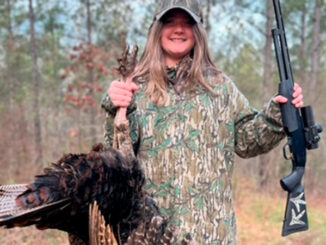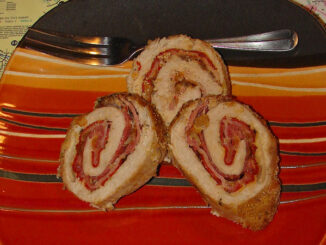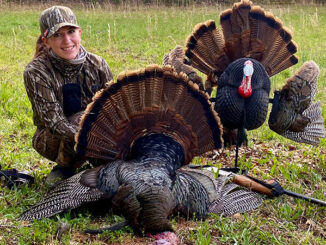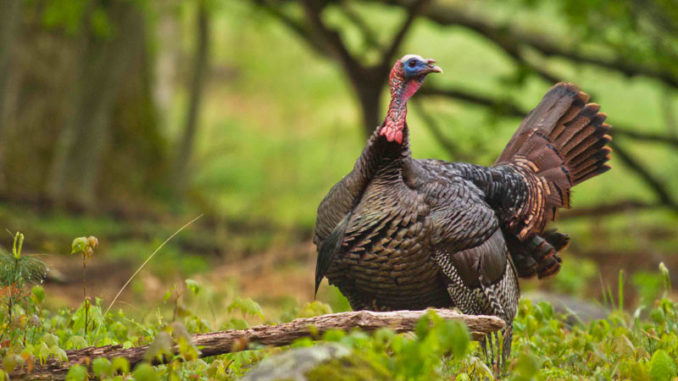
As turkey season winds down in the Carolinas, big toms are suddenly at risk, and especially around noon and in the afternoons. These four veteran hunters understand why.
Although turkey hunters in the Carolinas often believe gobblers are easier to kill early in the spring season, that’s only partially true.
Young male birds come to calls more readily early on, but veteran hunters know they can more easily lure trophy turkeys into range in the latter days.
This holds true for South Carolina with its March 20-May 5 season on private lands, and in North Carolina, with its traditional four-week season, this year April 13 to May 11.
Four expert hunters — Tar Heels Larry Smith of Chatham County and Ted White of Robeson County and the Palmetto State’s Cliff Timmons of Greenville and Chris Hawley of Murrells Inlet — consistently tag late-season birds.
Smith, 71, has hunted turkeys for 5½ decades. He downed his best gobbler ever the last week of the 2018 season.
“I hunted him from 6 a.m. to 1:50 p.m.,” he said, “starting when he gobbled from a tree that morning.”
Making soft mouth-call yelps and cutts, Smith moved four times in six hours, trying to ambush the walking boss bird.
“Hens were nesting, so he was looking,” he said. “After lunch, I yelped and saw him at 80 yards.”
The gobbler closed to 30 yards before Smith, his back against a tree, dropped it with a Knight TK 2000 muzzle-loading shotgun. The tom weighed 231/2 pounds and carried an 111/2-inch beard and spurs 11/2 and 19/16 inches long.
Smith recalled something the late Dick Kirby, a famed call-maker and hunter, once said: “Early in the season, he’ll gobble, and hens go to him. As the season progresses, fewer and fewer hens show up, then no hens show up. When that happens, it’s the day you can kill him.”
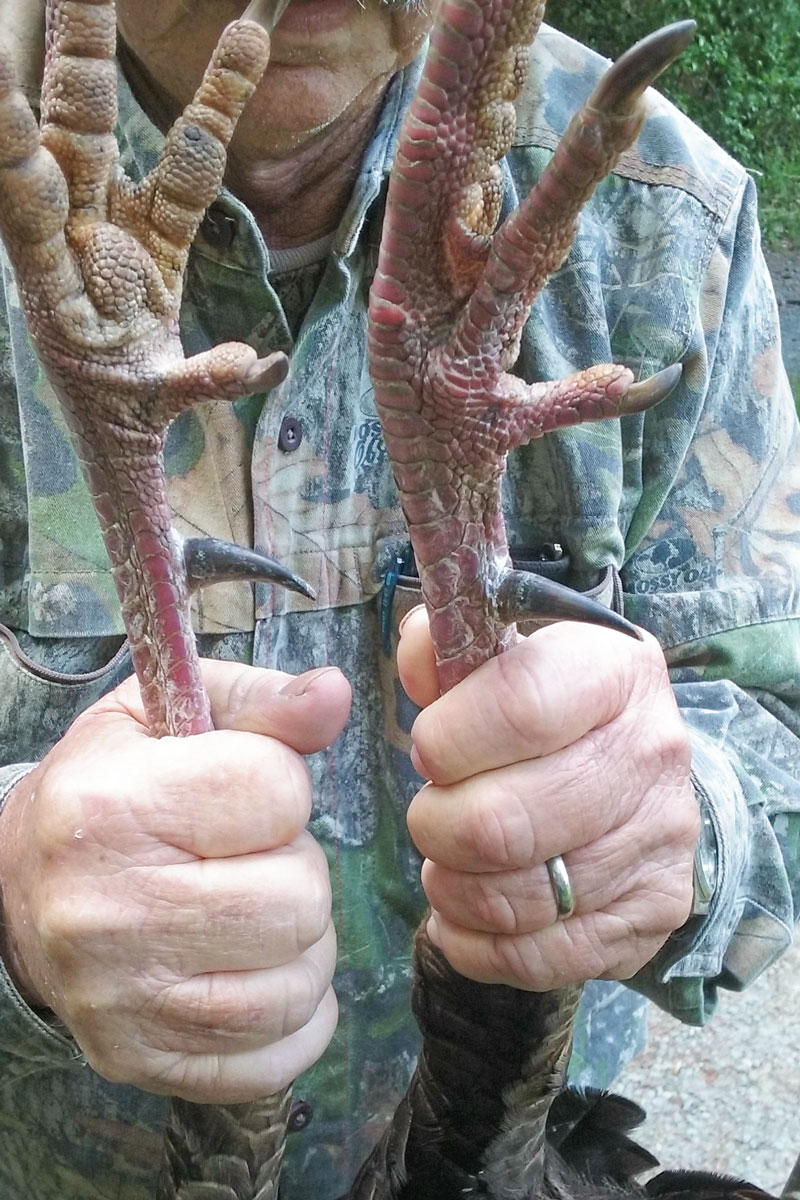
Smith has bagged many gobblers between 10 a.m. and 2 p.m., but he said if hunters call too much or too loudly, mature birds often “hang up” outside of gun range.
“If you hammer him with calls, he’ll gobble and wait for you to show up,” he said.
For Smith, using decoys also is problematic late in the season.
“I’ve had gobblers come in, see a decoy, walk away and gobble, waiting for the hen (decoy) to follow,” Smith said. “If I use a decoy, it’s a jake, not a hen, because gobblers will run off (mating) competition.”
Full-body camouflage clothing is a key, including a face mask and gloves.
If a gobbler answers a call, Smith sits with his back to a tree.
“I rarely use a gobble call, but if I do, it’s to make a dominant bird think another gobbler or jake is in his territory. Fighting-purr calls also may work.
“If I’m hunting public land, I don’t gobble. That can be dangerous.”
Timmons often hunts in Upstate South Carolina, which features habitat similar to North Carolina’s foothills and mountains. Deep ravines are interspersed with fields scattered at ridgetops or stream bottoms, and tactics are different.
“A friend and I didn’t fill any tags until April 28 (2018) when we tripled in Lancaster County,” he said.
The gobblers were with a hen on a ridge above them when Timmons used a hen call.
“The hen took them in the opposite direction,” he said. “We climbed the hill then went down a ravine to a logging road. We thought we could call them down to a logging deck. I called, and they gobbled way off.”
The two hunters walked down the road several yards, then sat down against trees.
“I began to hen yelp and cutt, then added two or three Haint gobble calls and got them fired up enough to leave the hen,” he said.
After two hours, the three gobblers walked up the road to within 25 yards. Timmons dropped two, and his buddy shot the other gobbler.
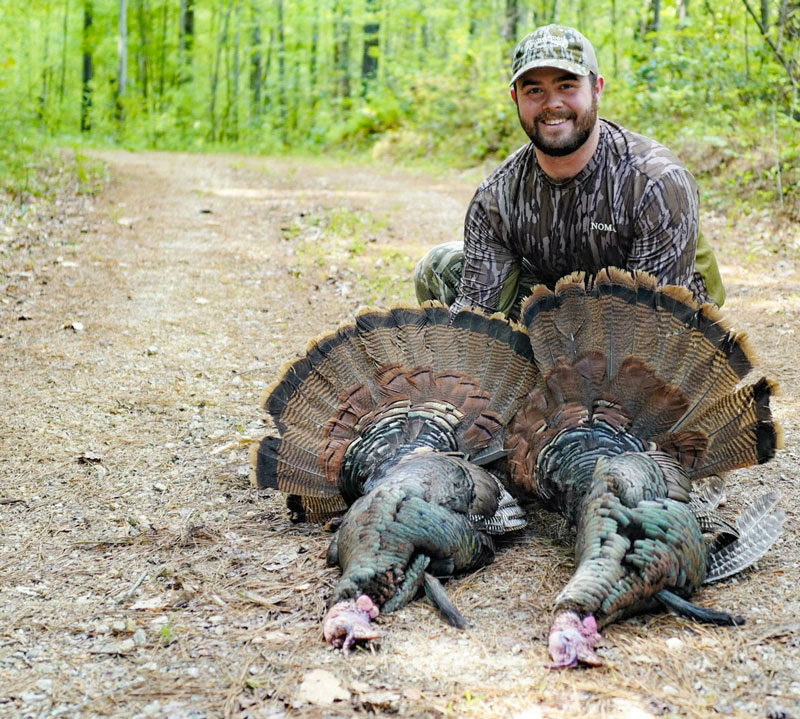
“I do a lot of scouting,” Timmons said. “Hen signs are good; I’ll check out those hot spots from 10 a.m. to 2 p.m. I’ve had a lot of luck then. I also listen for turkeys (flying up) to roost in the evening.”
In fields, he places a lone hen decoy.
“My favorite field ambush spot is the edge of a cedar thicket where we sit Indian style on the ground,” he said.
South Carolina’s Lowcountry — a handful of counties from the South Carolina-Georgia line northeast to around Georgetown and 50 of so miles inland — presents a different challenge.
“I hunt mostly the Williamsburg area,” said Hawley, president of the Murrells Inlet chapter of the National Wild Turkey Federation. “It has pine forests, some fields, uplands and a lot of swamps.”
Early in the season, he sets up blinds along field edges, but later on, he stalks gobblers in swamps.
“In the swamps, you don’t know what a gobbler is going to do,” he said. “It’s hard to know how far a gobbler is. At a big field, you might hear or see him a long distance. But I’ve set up in a swamp and had them drop right on me.”
Hawley calls and stalks swamp birds during the season’s final days. If he thinks a gobbler is headed toward a road or field, he’ll walk to one of those openings.
“If he’s coming and stops gobbling, I’ll shut up,” Hawley said. “If you overcall, that’s a no-no. I use mouth calls and a custom-made John Tanner slate call. When he goes silent, I put away the calls.”
White, an assistant principal at Lumberton High School, agreed the season’s final days are “the best time to hunt a mature gobbler.
“If you catch a big tom alone, it can be as much fun as calling a 2-year-old bird,” he said. >
Scouting is the key to success.
“You should get to know your area,” White said.
Eastern North Carolina features plenty of large crop fields that attract turkeys, fields that may be surrounded by swamps where turkeys roost. They’ll pitch down from those roosts into fields, and decoy setups featuring a jake and hen or strutting decoys are productive.
“Turkeys like spring wheat fields,” he said. “The first three or four days after corn planting, they pull up sprouts. But they may come in silent; you might only hear drumming. At fields, I like to set up at logging or old tram-road entrances.
“In woods, you also might call one you’ve seen from a ridge.”
White prefers diaphragm mouth calls and aluminum pot calls.
“I also sometimes use a gobbler yelp, which has a deeper tone than a hen yelp,” he said.
He agreed overcalling is a huge mistake.
“Gobblers expect hens to come to them” White said, “so patience is crucial. If you can see him, stop calling. If you can’t see him, but he’s hot, also shut up. Sit still 30 minutes longer than you can stand. You’ll be surprised at the results.”
‘Ghost’ call for gobblers
Experienced hunters use locator calls to get responses from turkey gobblers, hoping to make a bird reveal his location but not necessarily lure him to the hunter.
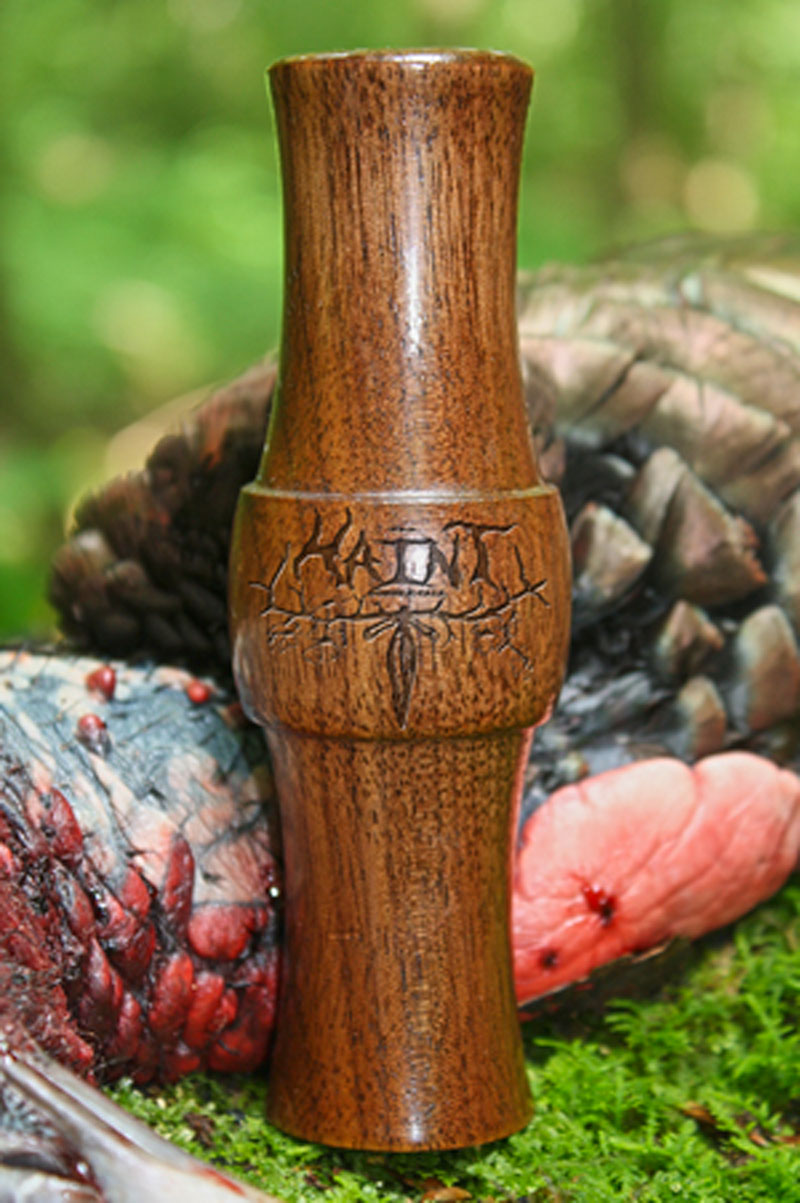
Crow calls and owl hoots are popular locator calls, but if birds are tight-lipped, some hunters use a gobbler call.
The “Haint” call stands above others in producing realistic gobbles.
“It’s a little difficult to learn to use but sounds exactly like a gobbler,” said Cliff Timmons of Greenville, S.C. “Once I was walking out of a 200-acre area near Union and using my Haint call. I met some other hunters who said, ‘You can’t use electronic calls in South Carolina.’ They were surprised it was a gobble call.”
Timmons only uses the Haint call on private land, never on public land because of the chance of attracting another hunter.
“I move a lot and use the Haint to locate a bird, move on him, get hidden, then use hen calls,” he said.
“Haint” is a rural Southern pronunciation of the verb “haunt.” Southerners use the word as a noun or a verb. A “haint” is a ghost, but a person or dog’s spirit might “haint” a house.

